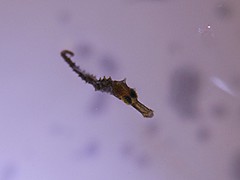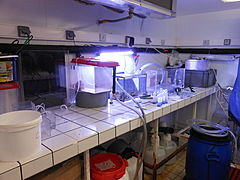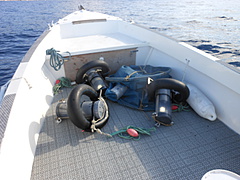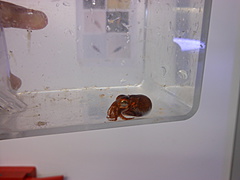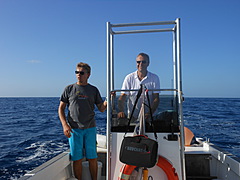Baby-sitter for fish larvae: patience and astonishment
by Julie Lafaye, on
I was looking for an internship in oceanography and I was lucky to be involved in this project during one full-on month. Initially, it was planned that I would observe larvae in the DISC at night, to push the fish larvae behaviour research started last year further. Unfortunately, the infrared light system was not ready yet, so I ended up DISCing during the day (too bad, I had to sleep at night!). This allowed to verify whether the results found last year were robust. Fifty Chromis chromis larvae were tested in the DISC; 30 were observed the same day (a new record for the largest number of observations in one day!) with perfect experimental conditions (and sighting of an ocean sunfish!).
I also measured the swimming speed of Diplodus annularis in a swimming chamber. I can say that during two days, I was the only person being cold whereas the outside temperature was 30°C or more. The 33 Diplodus annularis swam between 5 cm/s and 25 cm/s. The next step was extracting lipids from the fish muscle in order to know if the individual speed was related to the body condition of the individual. The final results from this will come next year.
My internship was a great opportunity to learn about fish larvae and why they should be studied. I am very grateful to Jean-Olivier Irisson and Robin Faillettaz for their trust, their patience and their knowledge. I have shared great moments with them.
